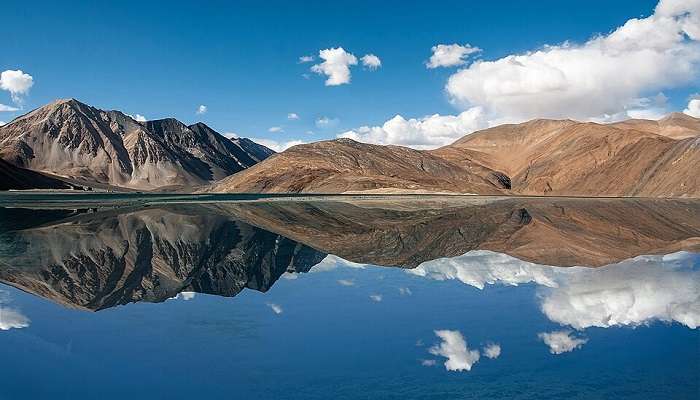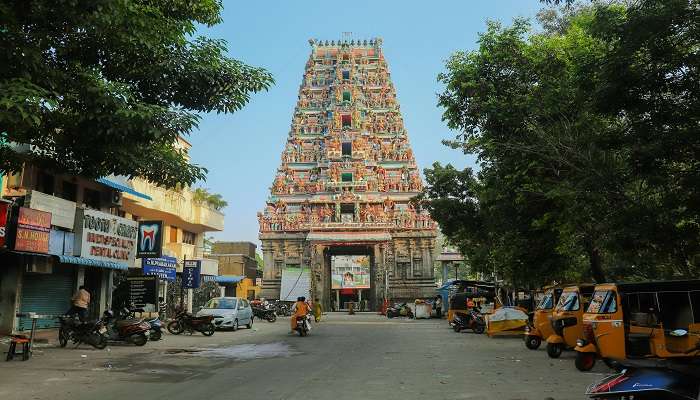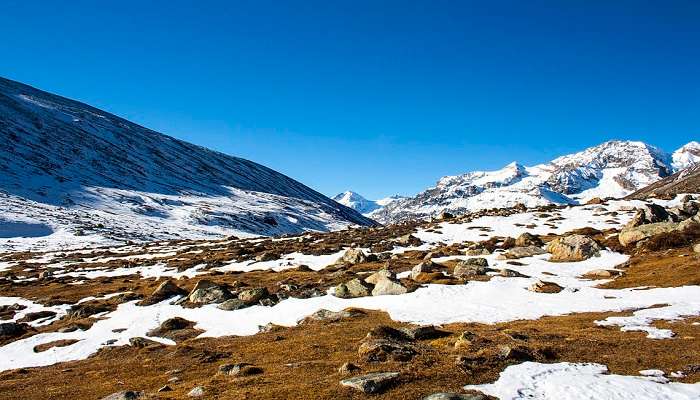Embark On A Journey To Vibhishan Kund In Uttar Pradesh In 2025
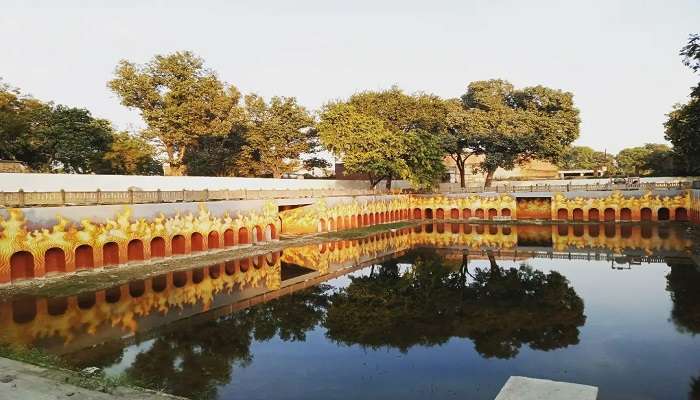
The city identified as the present-day Ayodhya is also identified in the epic Ramayana and its many versions as the birthplace of the Hindu deity Rama of Kosala. Hence, it is deeply revered as the first of the seven most paramount pilgrimage sites in Hinduism. Amidst the rich ancient heritage that graces this holy city, Vibhishan Kund stands as a testament to not only history but also spirituality and artistry. A host of kunds (sacred water bodies) can be found in Ayodhya. These were then linked with mythological stories so the people could venerate them.
Visit Vibhishan Kund
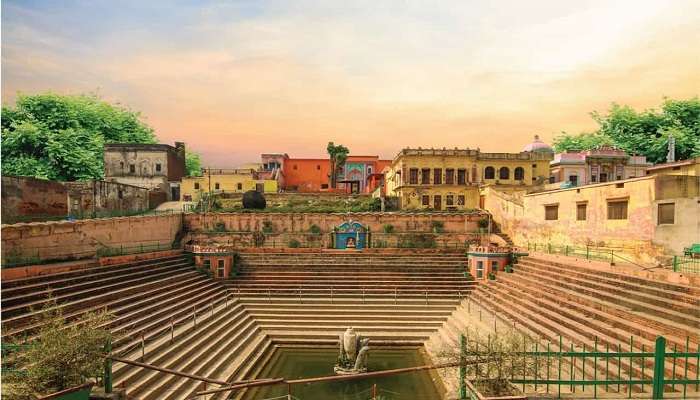
Water, once the undisputed domain of local deities, its life-giving and life-sustaining attributes linked with wealth and prosperity, became one of the key elements of the mnemonic landscape of Ramkatha. As a source of life, it was attributed frequently, as in the myths of the rivers Sarayu and Tilodaki, lowland basins in the floodplain, and inland ponds. Water bodies— namely kunds (masonry tanks with steps), sars or sarovar (ponds), and the holy River Sarayu- have all been linked to specific episodes in Ramkatha. That Vishnu (who was incarnated on earth as Rama) is immanent in Sarayu is revealed in its name ‘Netraja’ given because it flows from Vishnu’s eyes, was collected by Brahma in another sacred Manas Lake and brought by the prominent royal sage Vashishth to Ayodhya.
Tilodaki, like Sarayu, was brought to earth by divine intervention through the selfless actions of the Lord, in this case, by Rama, with the purpose of quenching the thirst of his horses from Sindh. Other kunds were renamed—Vibhishan Kund and Sugriv Kund, named after the monkey warriors of Rama’s army who came back with him to Ayodhya—and collected the overflow north of Ramkot.
Must Read: Places To Visit In Uttar Pradesh
Where Is Vibhishan Kund Located?
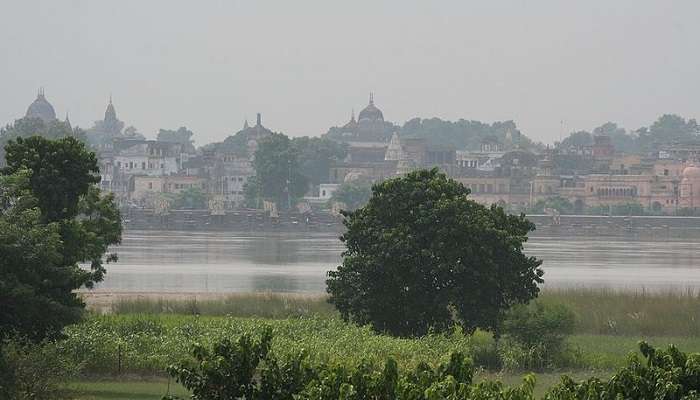
Vibhishan Kund can be found at Tulsi Nagar, Ayodhya, Uttar Pradesh, India 224123. This Kund or sacred water body is located in close vicinity to the highly visited and famous Ram Ki Paidi, which is just 1 km away. The location is not difficult to locate or reach and is quite easily accessible. You just need to follow the Ashrafi Bhawan Road and within no time, you will find yourself among the serenity and tranquillity of Vibhishan Kund.
The nearest railway station to this historical gem – Vibhishan Kund is Ayodhya railway station, at a distance of a mere 0.90 kilometres away it.
Places To Visit Near Vibhishan Kund
The present-day city of Ayodhya is believed to have been the capital of the ancient Kosala kingdom in the Ramayana, hence its nickname. The Adi Purana describes the region as famous as su-kośala because of its prosperity and skill.
1. Ram Janmabhoomi
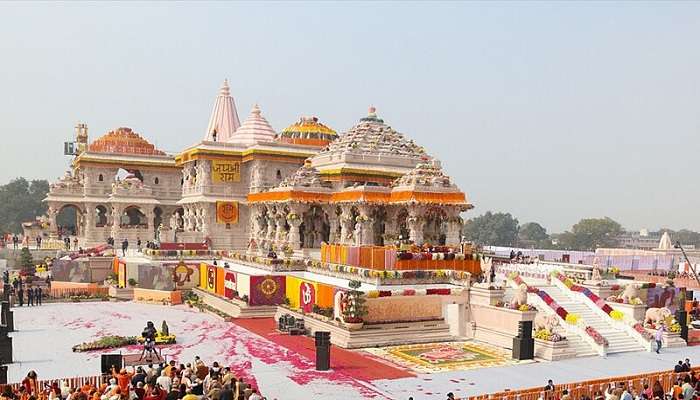
The city has been recently resurfacing in the news due to a new development int the city’s already popular sector of religious tourism. The Ram Janmabhoomi is believed and now officially recognised as the birthplace of the Hindu deity, Lord Ram. According to the Hindu epic Ramayan, Ram, described as Lord Vishnu’s seventh manifestation, is said to have grown up along Ayodhya’s river Sarayu. Located in the present-day city of Ayodhya, the Ram Janmabhoomi is a highly revered site for Hindu devotees and the recent developments have made this complex a great centre for religious tourism.
Suggested Read: Rumi Darwaza
2. Ayodhya Deepotsav
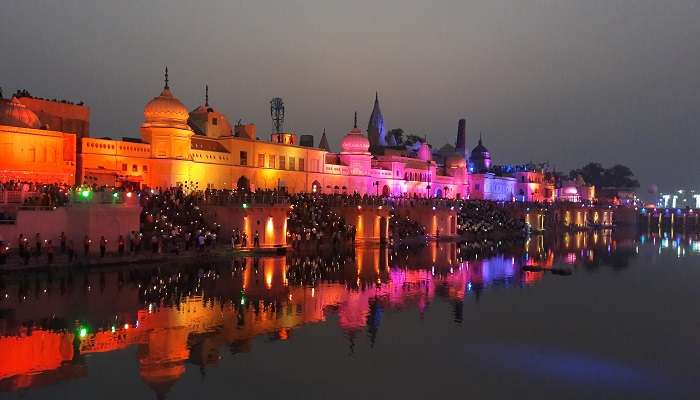
Ayodhya Deepotsav is held annually in the holy city of Ayodhya, Uttar Pradesh, India. The festival is celebrated with great pomp as the occasion holds great cultural and religious importance and meaning as it commemorates the return of Lord Rama to his home and kingdom of Ayodhya after a 14-year exile and also his victory over the demon king Ravana signifying the victory of dharma over arrogance. Deepotsav, which translates to festival of lights, is celebrated with grandeur and enthusiasm, drawing devotees and tourists from all over the country.
3. Ramkot
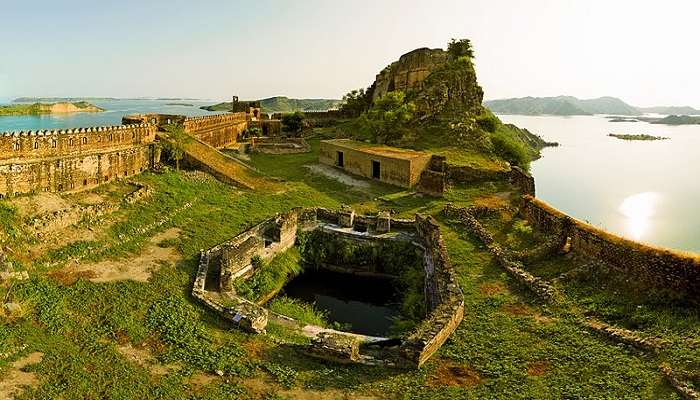
Ramkot is the main place of worship in Ayodhya, and the site of the ancient citadel of its namesake, standing on elevated ground in the western city. Although visited by pilgrims throughout the year, it attracts devotees from all over the world on Ram Navami, the day of the birth of Rama. Ram Navami is celebrated with great rigour and reverence in the Hindu month of Chaitra, which falls between March and April. Also, the Swarg Dwar here is believed to be the site where Lord Rama’s mortal remains were cremated. Also, the surrounding Mani Parbat and Sugriv Parbat are ancient earth mounds, the first identified by a stupa built by the Mauryan emperor Ashoka, and the second is an ancient monastery.
Suggested Read: Places To Visit in Varanasi
4. Treta Ke Thakur
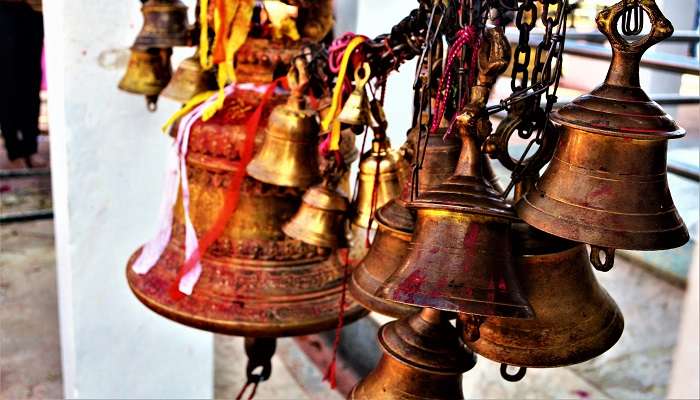
Situated in close proximity to the Naya Ghat in the holy city of Ayodhya, the Treta Ke Thakur Temple houses numerous idols of all the revered figures mentioned in the epic Ramayana including that of Lord Ram, Sita, Lakshman, Hanuman, Bharat and Sugreev. These statues are said to have been sculpted out of a single black sandstone with great genius and fine intricacy.
5. Gulab Bari
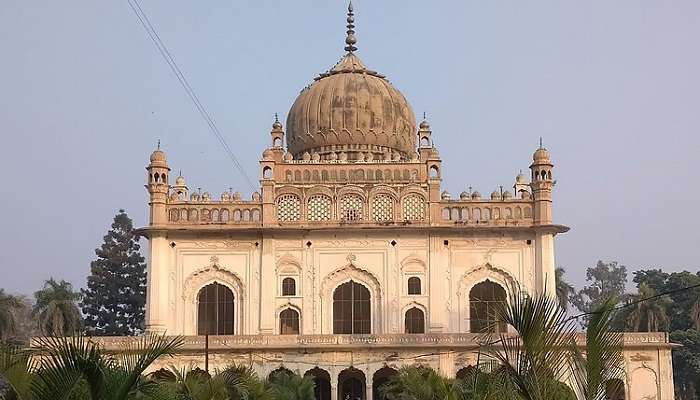
Also known as the Garden of Roses locally, the Gulab Bari is located in Vaidehi Nagar. It is the tomb of the third Nawab of Faizabad (also known as Oudh or Awadh in earlier times), Nawab Shuja-ud-Daula and his parents. This site has been listed under the Ancient Monuments and Archaeological Sites and Remains Act and special emphasis has been laid on Gulab Bari which is currently preserved as a part of national heritage.
Suggested Read: Places To Visit In Allahabad
6. Hanuman Garhi
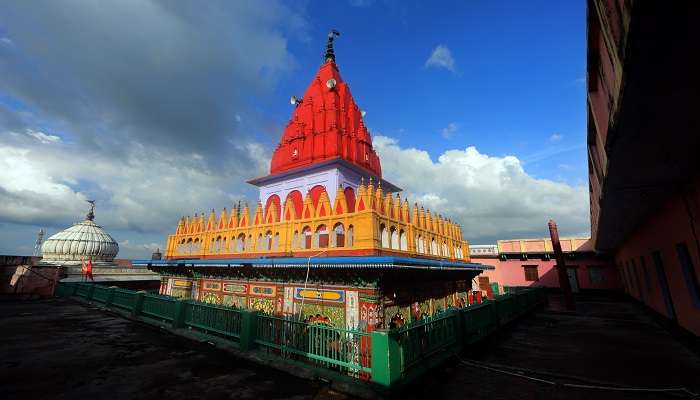
Located in Sai Nagar, Hanuman Garhi is a 10th-century temple dedicated to the Hindu God, Hanuman. It is one of the most important temples in Ayodhya as it is customary to visit Hanuman Garhi before visiting the Ram Temple in Ayodhya for Hanuman has been widely hailed and recognised as Rama’s most ardent devotee. It is deeply believed that Lord Hanuman stayed at the site of the present-day temple guarding Ayodhya.
Further Read: Samthar Fort
Now you have complete information about Vibhishan Kund and the surrounding places of interest and that gives you a list of reasons to visit the holy city of Ayodhya. Make sure you plan your trip to Ayodhya at the earliest and don’t forget to explore all the historical and spiritual marvels of this city. Don’t miss out on exploring these wonders and book your tickets now!
For our editorial codes of conduct and copyright disclaimer, please click here.
Cover Image Source: Facebook
Frequently Asked Questions About Vibhishan Kund
How many prominent kunds are there in Ayodhya?
A host of kunds (water bodies) have been constructed in Ayodhya namely - Sita Kund, Rukmini Kund, Hanumat Kund, Vibhishan Kund, Bharat Kund, Suraj Kund, Jata Kund, Urvashi Kund, Goshark Kund, Rati and Kusumayudh Kund, Kund, Braham Kund, Brihaspati Kund, Swarnkhani Kund, Sagar Kund, Yogini Kund.
What are the other famous kunds near Vibhishan Kund?
At Bharat Kund, Rama's younger brother Bharat stayed for 14 years during the exile of Shri Ram keeping sandals of brother Ram and governed. Meanwhile, at Brahm Kund, Lord Brahma is believed to have done a prolonged tapa. Whereas, at Jata Kund Ram-Lakshman cut their long hair after end of their exile.
How does the Ayodhya dispute involve Lord Rama?
The Ayodhya dispute revolves around the Babri mosque which was built approximately in 1528–29 under the Mughal emperor Babur and highly believed to have replaced a temple that stood at the birth spot of Lord Rama.
Who was King Vibhishan?
The younger brother of King Ravana, Vibhishan has righteous and chose to side with Lord Rama against his own brother in the battle between Rama's Dharm and Ravana's Adharm. And it is only because Vibhishan disclosed the weak point of Ravana that Lord Rama and his monkey army was able to defeat the king of Lanka.
How far is Vibhishan Kund from Ram ki Paidi?
This Kund or sacred water body is located in close vicinity to the highly visited and famous Ram Ki Paidi, that is just 1 km away. The location is not difficult to locate or reach and is quite easily accessible. You just need to follow the Ashrafi Bhawan Road and within no time, you will find yourself among the serenity and tranquility of Vibhishan Kund.
People Also Read:
Janaki Kund Nehru Kund Radha Kund

With a passion for exploring and travelling to the roads long forgotten, experience the world through enthralling stories and adventures. Join me as I share my experiences at some of the world’s most popular tourist destinations and quench that pestering curiosity with something exciting!



